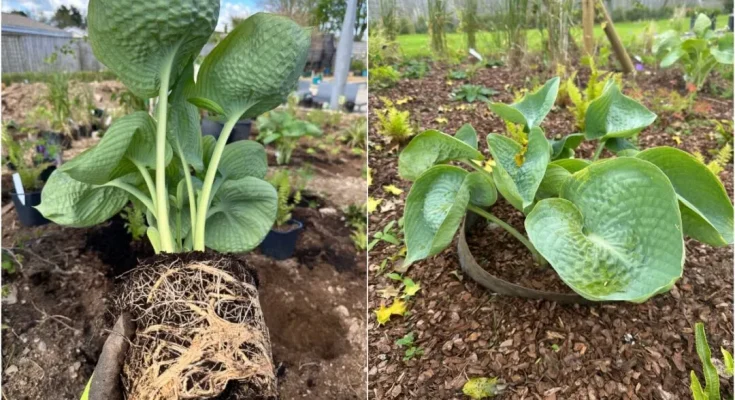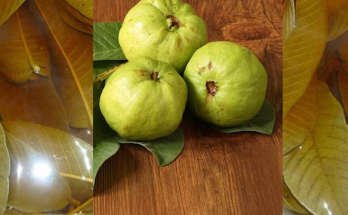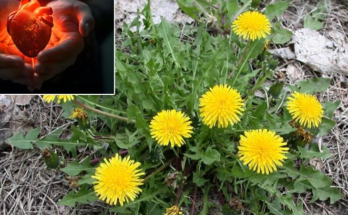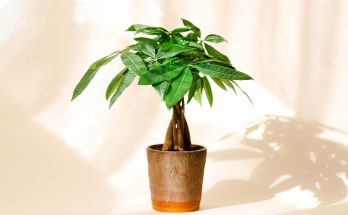Did you know that this is the year of the hosta?
I didn’t just make that up. The National Garden Bureau (NGB) declared hosta “perennial of the year” in an effort to encourage home gardeners to plant more of this super adaptable, shade-loving plant.

Who’s the NGB anyway and why should we care what they say? It’s a nonprofit founded in the wake of the First World War. Its members are professional horticulturists and growers in the United States and Canada, so they really know what they’re talking about. If they say we should be planting hostas, then we should.
If you’re not already growing hostas, now’s the perfect time to make some room for them in your garden. Here’s what you should know if you’re planting hostas:
1. You can plant hostas in spring or fall.
As with all hardy perennials, there is an optimal planting time. And if you’re reading this in spring and fall, then you’re all set. Putting hostas in the ground in spring – when the soil is warming up – will ensure they get plenty of time to establish their roots this year. The same goes for planting them in the fall to have them ready to shoot out of the ground the following year.

However, keep in mind that it takes hostas a few years to reach maturity; so their performance during their first year is not indicative in any way of how well they’ll do in general. Smaller cultivars may take three to five years to reach their full size, while larger ones can take up to seven years.
Can I still plant hostas in summer?
Yes, you can. Precisely because hostas are shade-loving plants, so you’ll be planting them in dappled shade. This way, you’re avoiding the biggest perils of summer planting – too much sun and too little water.
However, there are two caveats.
First, you MUST keep young plants really well watered. In a best case scenario, drought will only stress young hostas and set them back for next year. In a worst case scenario, drought might kill your baby hostas.

Secondly, if you’re planting hostas in the summer, only plant live ones (in a container, with green growth), not bare root ones.
2. Different hostas like different types of light.
There’s a reason why you’ll see hostas on every single plant list for shade gardens: they do not mind the shade. And conversely, they do not care for the sun, especially full sun. Their foliage is generally very prone to sun scalding.

But since there are over three thousand hosta cultivars – and more being registered every year with the American Hosta Society – there is some leeway in terms of light levels.
If you’re planting gold-leaf hostas, you can get away with putting them in a sunnier location, but still don’t plant them in full mid-afternoon sun. For blue-leaf hostas, a shadier location will help them retain the blue hue longer into the summer. Variegated hostas prefer dappled shade.

And if you’re planting hostas with fragrant blooms, you’ll get more perfume wafting your way if the plants get some sun in the morning and early afternoon.
How about full shade? Hostas will survive in full shade, but will grow at a much slower pace and may bloom very little.
3. Hostas love rich soil.
I keep reading that hostas will do well in all types of soil, but that hasn’t been my experience. I’ve noticed they struggle in sandy soil. They don’t die back, but they don’t exactly grow very well either. Similarly, hostas are not big fans of compacted soil, such as heavy clay.
If that’s the type of soil you’ve got in your garden, all is not lost, but you’ll need to add some soil amendments when you plant your hostas. Add a generous amount of compost to the planting hole and then continue to incorporate organic matter into your soil every spring.

Soil that’s rich in organic matter is good at retaining water as well, which is another much-needed factor for hostas to thrive. They need constant moisture. Dry soil leads to slower growth and fewer leaves with less shine.
While we’re talking about soil improvement and water retention, don’t forget to add mulching to your hosta care to-do list every year. Hostas don’t react very well to the acidity of fresh wood chips or bark, so it’s better to opt for aged bark, compost or leaf mold as mulch.
4. Interplant it or co-plant it with other damp-loving plants.
Now that we’ve covered the three key factors (light, water and soil), let’s have a look at the fun stuff. Designing hosta corners and pairing hostas with other plants.
The classic piece of advice for hostas is to plant them in groups of odd numbers – generally three or five plants. And I’ve noticed that a lot of the time, hostas are paired with other hostas.

This can add a layered and textured effect if you’re bringing together variegated hostas and solid colored ones.
But I’ve also seen a few visually overwhelming combinations of variegated hostas that were headache-inducing. It is a matter of personal preference and taste, of course, so do whatever makes you happy in your own garden.

But allow me to suggest a different approach. It’s less purist and more modern, but I think it works better for creating visual interest without any of the overwhelm.
Interplant your hostas with other shade-tolerant, moisture-loving plants such as camassias, shuttlecock ferns (Matteuccia struthiopteris), flag irises, heuchera, pulmonaria, candelabra primulas, ligularia and spirea. You’ll not only add flowers for pollinators to the mix, but you’ll also create a more colorful and diverse corner without over-variegation.
5. You can plant hostas in containers.
My last piece of advice about hostas is this: you can plant some even if you have a small garden. Or no garden at all. Another reason to plant hostas in containers is if you have a hungry deer population around your garden. Deer absolutely love munching on hostas. You can keep an eye on your plants and discourage wildlife snacking if you plant your hostas in a container right outside your door.

But do a little research first; don’t just grab the first hostas you find at the garden center.
Here’s what you should know.
Hostas are classified into five sizes: mini, small, medium, large and giant.
For containers, mini hostas (under six inches tall) and small hostas (between seven and ten inches) are the perfect choices. Compare that to giant hostas, which can grow around four feet tall and six feet wide.
The trouble is that you sometimes can’t tell what mature size you’re buying just by looking at the young plants. So look for clues in the name of the cultivars. Words such as “baby”, “little”, “mini” and “tiny” are a good indication of a small cultivar.

There’s also a series of mini and small hostas that has the word “mouse” in the name, such as:
Blue Mouse Ears
Ruffled Mouse Ears
Cat and Mouse
Church Mouse
Missie Mouse
For a larger container, you can even get away with planting a medium-sized hosta.

The same advice applies to growing hostas in containers – keep them well-watered and out of full sun.
Whether you choose them for their lush and leafy look, the diversity of options or their shade tolerance, you will not regret bringing hostas into your garden.



